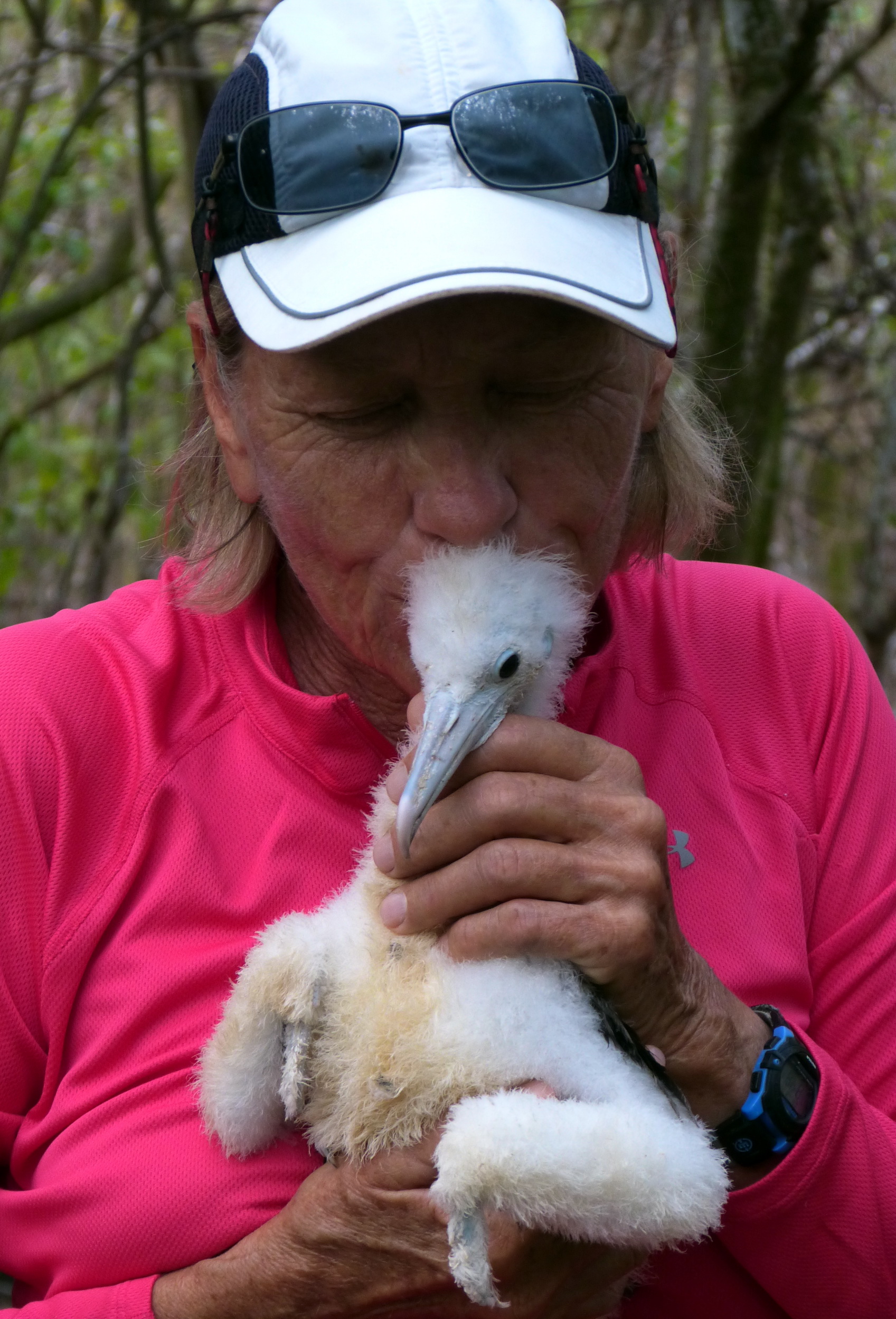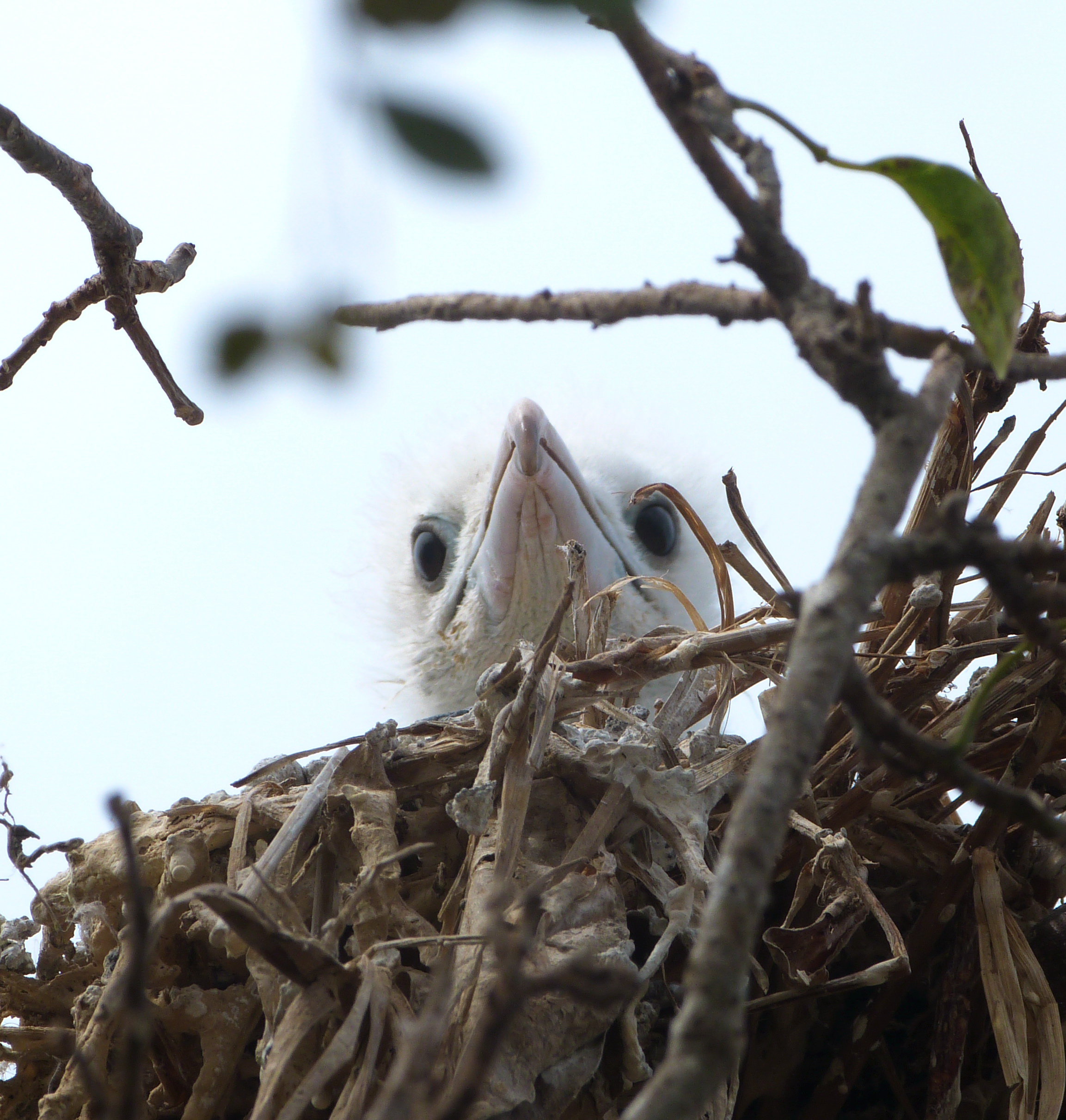Published in the Ocean Watch column, Honolulu Star-Advertiser © Susan Scott
February 27, 2012

Susan gives frigate chick, Darwin II, a peck before sending it back to its nest. Craig Thomas photo.
I kissed a frigate bird. This isn’t something I’ve been dying to do. I’ve seen these seabirds’ hooked beaks and sharp claws in action during their aerial attacks on booby birds. But when a baby frigate bird fell from its nest, what’s an animal lover to do? I picked up the chick, and when it neither bit nor scratched me, I had to try to help.
The rescue came during a hike on Isla Isabela, a national park and world heritage site in Mexico’s Sea of Cortez. Craig and I had sailed from Mazatlan and, after rolling at anchor for an hour, decided to go ashore.
This was no small decision. Lava spires jut around the small anchorage, and submerged pinnacles are notorious for tangling chains and devouring anchors. Lightning lashed, followed by ominous rumbles.
But with nine seabird and four reptile species breeding there, Isla Isabela is called Mexico’s Galapagos. We had to go ashore.
Tying the dinghy on the beach, we set out. At first we climbed only peaks that overlooked the anchorage, but when the Honu appeared to be holding, we ventured inland. There we discovered a valley packed with frigate birds, some courting, some incubating eggs, some tending chicks and some missing chicks.
There was no hope for the first youngster we found on the ground since the trees were too tall and spindly for a rescue attempt. We moved the chick off the path and walked on. That’s when we found Darwin II, another baby bird fallen from a tree supporting four adults on nests.
We braced for a peck on the head or at least a squawk of protest, but the sitting parents watched in calm silence while we searched for a suitable branch. As we stood under the tree, Craig with the stick and me with the chick, nature gave us our cue: The empty-nester flew from its nest while the other three parents stayed put.
I gave Darwin II a good-luck-and-goodbye kiss and balanced it on the end of the stick. With the chick teetering at alarming angles, Craig slowly raised it to the vacated nest. The chick stepped in and nestled down, safe at home.

Isla Isabela was all I hoped for, teeming with wildlife, all relatively tame, because like Hawaii’s native species, they evolved without predators.
We spent two glorious days exploring Isabela, but those menacing storms in that marginal anchorage finally forced us to sail to Puerto Vallarta.
When we sail Honu north again, I will stop by. I have to visit a frigate bird there named Darwin II.
©2012 Susan Scott